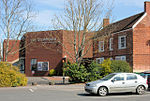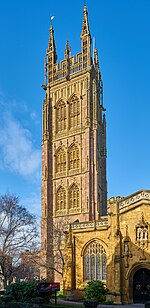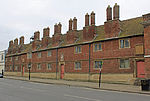Taunton

Taunton () is the county town of Somerset, England, with a 2011 population of 69,570. Its thousand-year history includes a 10th-century monastic foundation, Taunton Castle, which later became a priory. The Normans built a castle owned by the Bishops of Winchester. Parts of the inner ward house were turned into the Museum of Somerset and Somerset Military Museum. For the Second Cornish uprising of 1497, Perkin Warbeck brought an army of 6,000; most surrendered to Henry VII on 4 October 1497. On 20 June 1685 the Duke of Monmouth crowned himself King of England here in a rebellion, defeated at the Battle of Sedgemoor. Judge Jeffreys led the Bloody Assizes in the Castle's Great Hall. The Grand Western Canal reached Taunton in 1839 and the Bristol and Exeter Railway in 1842. Today it hosts Musgrove Park Hospital, Somerset County Cricket Club, is the base of 40 Commando, Royal Marines, and is home to the United Kingdom Hydrographic Office on Admiralty Way. The popular Taunton flower show has been held in Vivary Park since 1866, and on 13 March 2022, St Mary Magdalene parish church was elevated to the status of Taunton Minster.
Excerpt from the Wikipedia article Taunton (License: CC BY-SA 3.0, Authors, Images).Taunton
St James Street,
Geographical coordinates (GPS) Address Nearby Places Show on map
Geographical coordinates (GPS)
| Latitude | Longitude |
|---|---|
| N 51.019 ° | E -3.1 ° |
Address
County Ground
St James Street
TA1 1JT , Firepool
England, United Kingdom
Open on Google Maps










